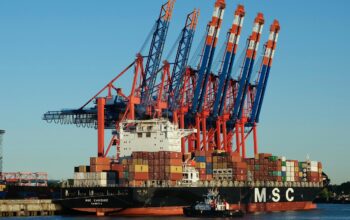Introduction to Supply Chain Trends
Supply chains are the backbone of modern commerce, connecting suppliers, manufacturers, and consumers worldwide. However, today’s supply chains face unprecedented challenges, from pandemics to trade tariffs and sustainability concerns. To address these challenges, companies are leveraging digital transformation and innovative technologies like AI to enhance resilience and responsiveness.
Key Trends in Supply Chain Management
Here are some of the trending technologies and strategies reshaping the supply chain landscape:
-
Digital Transformation and AI Companies like Maersk are transforming their supply chains by integrating AI and machine learning to enhance data quality and decision-making. This shift helps in predicting demand and managing inventory effectively, allowing businesses to stay competitive in a volatile market.
-
Agentic AI and Autonomous Planning Agentic AI is gaining traction as it supports autonomous planning and execution. This technology can interpret natural language, summarize performance data, and trigger decision-making, freeing up resources for strategic priorities.
-
Breaking Down Data Silos Interoperability is key to breaking down data silos, enabling seamless communication across different departments and systems. This integration enhances agility and speed in supply chain operations.
-
Supply Chain Risk Management With rising costs and geopolitical tensions, companies are focusing on advanced risk management strategies using big data and AI. This proactive approach helps in predicting and managing emerging risks.
-
Adoption of E-commerce Logistics E-commerce has significantly impacted supply chain management, with companies relying on efficient logistics and payment systems to meet consumer expectations for speed and convenience.
Moving Forward
As supply chains continue to evolve, embracing these trends will be crucial for businesses to remain competitive and responsive to changing market conditions.
References:
- https://www.maersk.com/insights/resilience/2025/05/16/be-ready-to-unlock-supply-chain-resilience-through-digital-transformation
- https://www.gartner.com/en/supply-chain/insights/power-of-the-profession-blog/genai-isnt-the-top-digital-priority-for-supply-chains
- https://www.businesswire.com/news/home/20250513699388/en/Infios-Recognized-as-2025-Top-100-Logistics-and-Supply-Chain-Technology-Provider-by-Inbound-Logistics
- https://kpmg.com/us/en/podcasts/2025/global-supply-chain-trends-technology.html
- https://hakkoda.io/resources/5-trends-from-icon-2025/
- https://papers.ssrn.com/sol3/Delivery.cfm/5172973.pdf?abstractid=5172973&mirid=1
- https://pmc.ncbi.nlm.nih.gov/articles/PMC12063874/
- https://www.supplychainbrief.com/edition/daily-procurement-manufacturing-procurement-2025-05-12/



